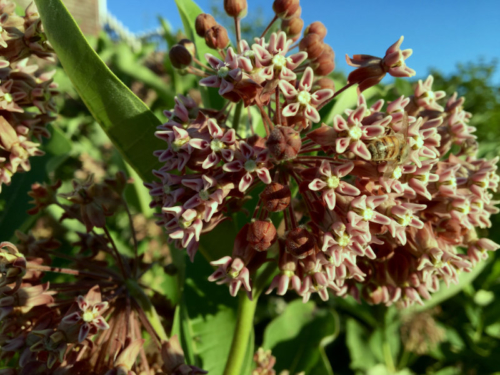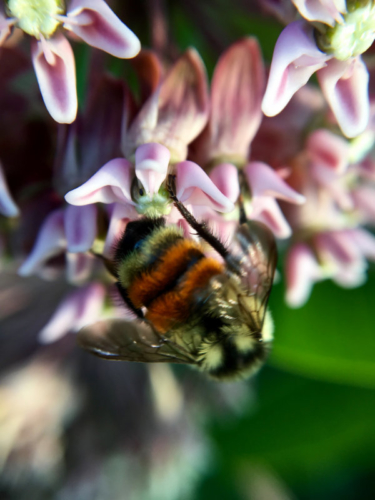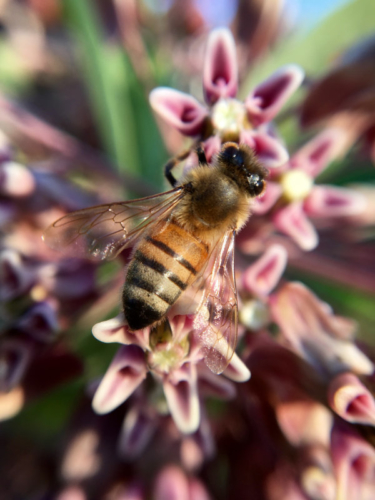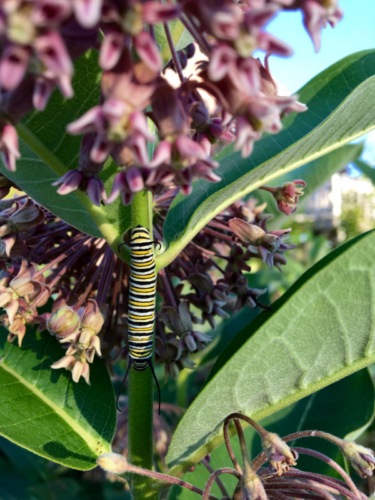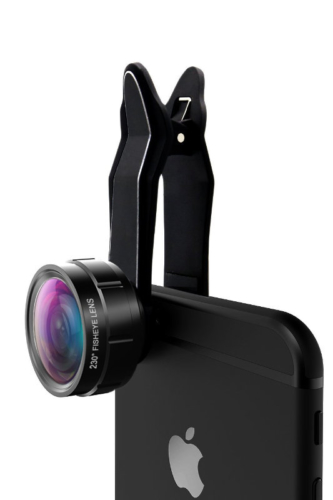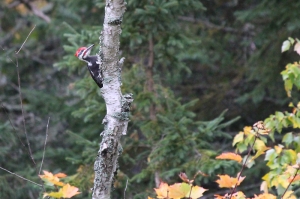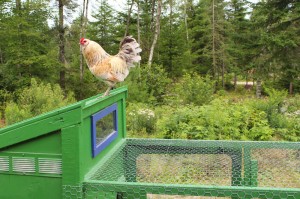The Monarch caterpillars are getting quite big. This morning I gave them a new sprig of milkweed. By this evening, they’d eaten all but the stock. I had two new stems of milkweed left in a mason jar on the counter from last weekend. As I prepared them for the hungry caterpillars, I found two new baby caterpillars hatched from eggs I’d unknownly brought home. We’re up to five Monarch caterpillars!
In search of more food for these voracious little things, Hannah and I headed up to the large milkweed plot in town.
Here are some milkweed flowers in the late afternoon sun. There were Monarchs flitting around, I didn’t have my camera with me. But I did have my phone – and my new macro lens just happened to be in the car.
There were bees everywhere – all different types, buzzing around together.
The bees on my lavendar this weekend were a bit skittish, scurrying off when I got too close with the phone/camera. These guys were on a sugar high and paid no attention to me as I angled for a picture.
We discovered this guy and decided to bring him home. That makes six caterpillars we’re raising into butterflies. My friend, Emily, is raising 70! I’ve dubbed her the butterfly lady.
A few of you wrote and asked for more information about my new macro lens. I did some searching on Amazon and landed on a trio of lenses from a company called DOFLY. I’ve only experimented with the macro, but the kit comes with a fisheye and wide-angle lense too. In the end, I chose this because of it’s 4.5 star rating and a price tag under $20.
The lens screws into this clip-on mounting. Position the clip over your phone’s camera lens and you are ready to go. It works just fine over my leather phone case. When photographing your subject with the phone, you have to get right on top of it. At close range, without the macro lens, the subject is blurry.
With the macro lens, when you get it just right, the results are wonderful.

